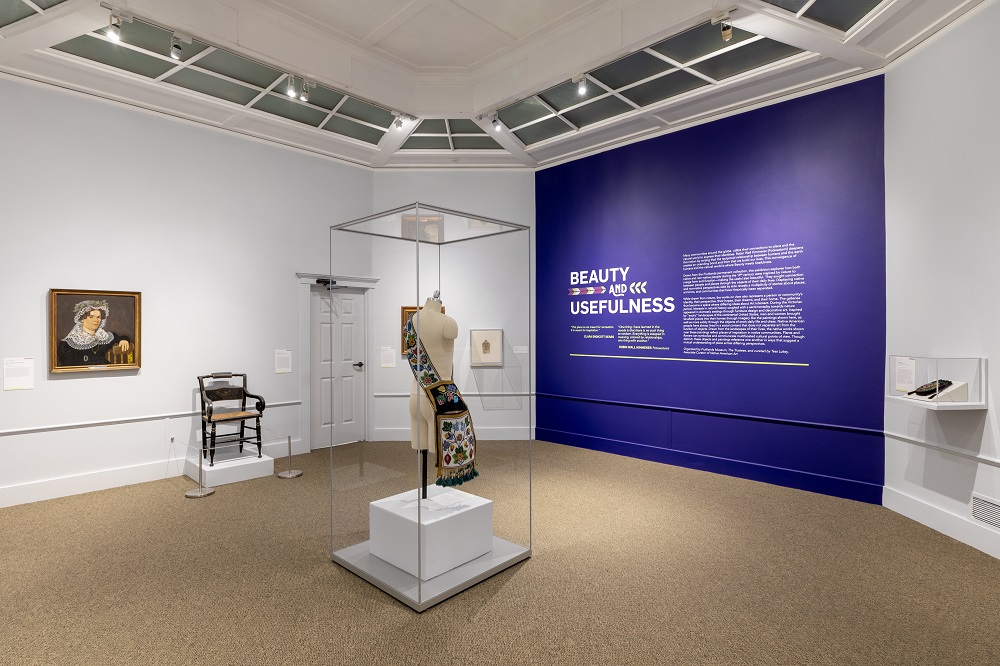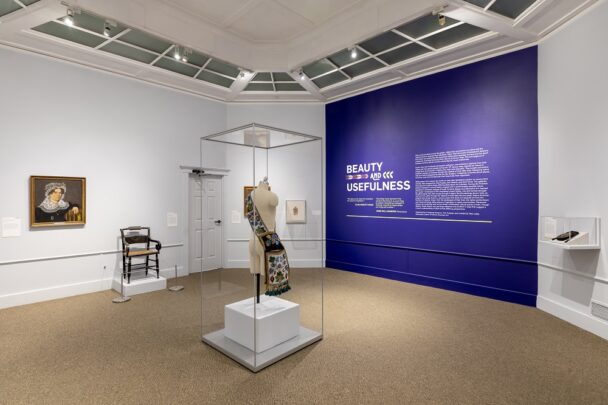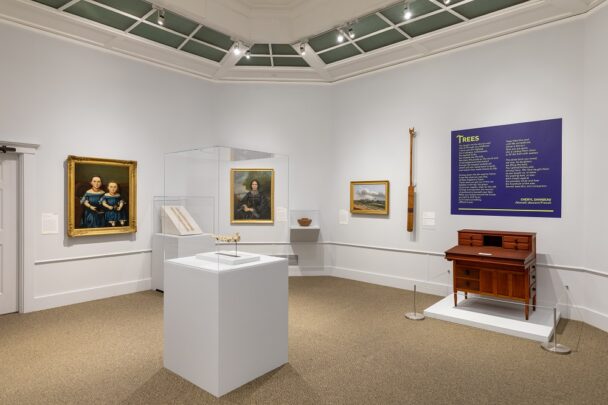

This place is not meant for recreation. It is meant for inspiration.
– Clara Endicott Sears
One thing I have learned in the woods is that there is no such thing as random. Everything is steeped in meaning, colored by relationships, one thing with another.
― Robin Wall Kimmerer (Potawatomi)
Many communities around the globe utilize their connections to place and the natural world to express their identities. Robin Wall Kimmerer (Potawatomi) deepens this notion by writing that the reciprocal relationship between humans and the earth creates an unending bond and from that we build our lives. This convergence of humans and the natural world is where Beauty meets Usefulness.
Drawn from the Fruitlands permanent collection, this exhibition explores how both native and non-native people during the 19th century were inspired by nature to merge form and function – making the useful also beautiful. They sought connection between people and places through the objects of their daily lives. Displaying Native and non-Native perspectives side by side reveals a multiplicity of stories about places, art forms, and communities that have historically been separated.
While drawn from nature, the works on view also represent a person or community’s identity, their perspective, their hopes, their dreams, and their home. The galleries thus become a space where differing ideas about Art intersect. During the Victorian period, interests in natural history coupled with a sentimentality towards nature appeared in domestic settings through furniture design and decorative art. Inspired by “exotic” landscapes of the continental United States, men and women brought far-afield places into their homes through imagery like the paintings shown here, as well as through the objects of one’s daily life and dress. Native American people have always lived in a social context that does not separate art from the function of objects. Drawn from the landscapes of their lives, the native works shown near these paintings reflect places of inspiration in their communities. Plants and flowers can symbolize and communicate multifaceted cultural points of view. Though distinct, these objects and paintings reference one another in ways that suggest a mutual understanding of place across differing perspectives.
Organized by Fruitlands Museum, The Trustees, and curated by Tess Lukey, Associate Curator of Native American Art

